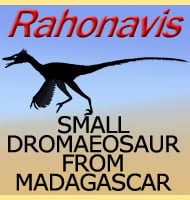In Depth
Not many fossilised bones of this dinosaur are known, but those that are are simply huge. Comparing these bones to the more complete remains of other genera has resulted in very rough estimates of around thirty meters long, raising the probability that Ruyangosaurus was one of the largest animals to ever walk the Earth. The only way that a more accurate figure for Ruyangosaurus could ever be established is if a single the missing parts are found, and unfortunately this is not likely. The bigger an animal is, the longer it takes for it to become buried so that the remains are protected from scavengers and the elements so that the bones can fossilise. This is why sauropod dinosaurs are usually found piecemeal, though several partial individuals of a genus can be just as good if not better than a single individual as this would enable the establishment of an average size for a species and not just one individual.
It seems that Ruyangosaurus is not the only large sauropod from the early Cretaceous of China, with Huanghetitan and Daxiatitan both also hinted at being some of the largest known sauropods.
Further Reading
- A new gigantic sauropod dinosaur from the Cretaceous of Ruyang, Henan, China, Lu J, Xu L, Jia S, Zhang X, Zhang J, Yang L, You H, Ji Q - 2009.










